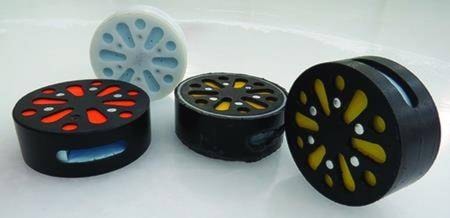MONTREAL — A team of Montreal university researchers has developed an audible hockey puck they say could revolutionize the sport for blind players.
For years, visually impaired hockey players have used a tomato juice can or a steel container filled with small balls as a puck.
The improvised devices work, but players have trouble finding them on the ice when they stop moving and become silent.
Three years ago, Gilles Ouellet, a blind hockey player and employee of Universite de Quebec a Montreal (UQAM), came up with the idea for a puck that makes a continuous sound.
Now, he and a team of researchers have created a prototype consisting of a shock-absorbent plastic shell with a battery-powered circuit board inside.
A series of sensors analyzes puck movement and transmits the data to a buzzer, which can be adjusted to a maximum level of 120 decibels — about equivalent to a chainsaw or a thunderclap.
“It’s going to make the game faster and more interesting,” Ouellet said. “And because the puck makes noise when it’s in the air, it’ll help goalies make more saves.”
Steve Vezeau, one of the researchers behind the project, said the team initially thought it would take six months to develop — but then they realized how hostile the hockey environment can be.
“There is the question of impact, but also the cold and humidity,” said Vezeau.
Players went through up to five tomato juice boxes per game, while the steel can lasted about two games. Vezeau said the sonorous puck has a lifespan of about three games.
“And obviously, getting a steel puck in the head hurts,” he added.
Vezeau and Ouellet are hoping the puck, known as BIPeR, helps to increase the sport’s popularity. There are about 400 people in North America who play in so-called blind hockey leagues.
Montreal, Toronto and Vancouver have clubs, and about 12 teams have formed in the United States over the past few years. Ultimately, players are looking for their game to be included in the Paralympics.
“The United States wants to organize a nations cup next May,” Ouellet said. “There is already a team in Finland and players all over Europe. When we have an efficient puck we can export it and it could increase the sport’s popularity and help to standardize the game.”
The next step is to find a partner that could help the research team scale their product. The prototype was financed in part by USA Hockey.
